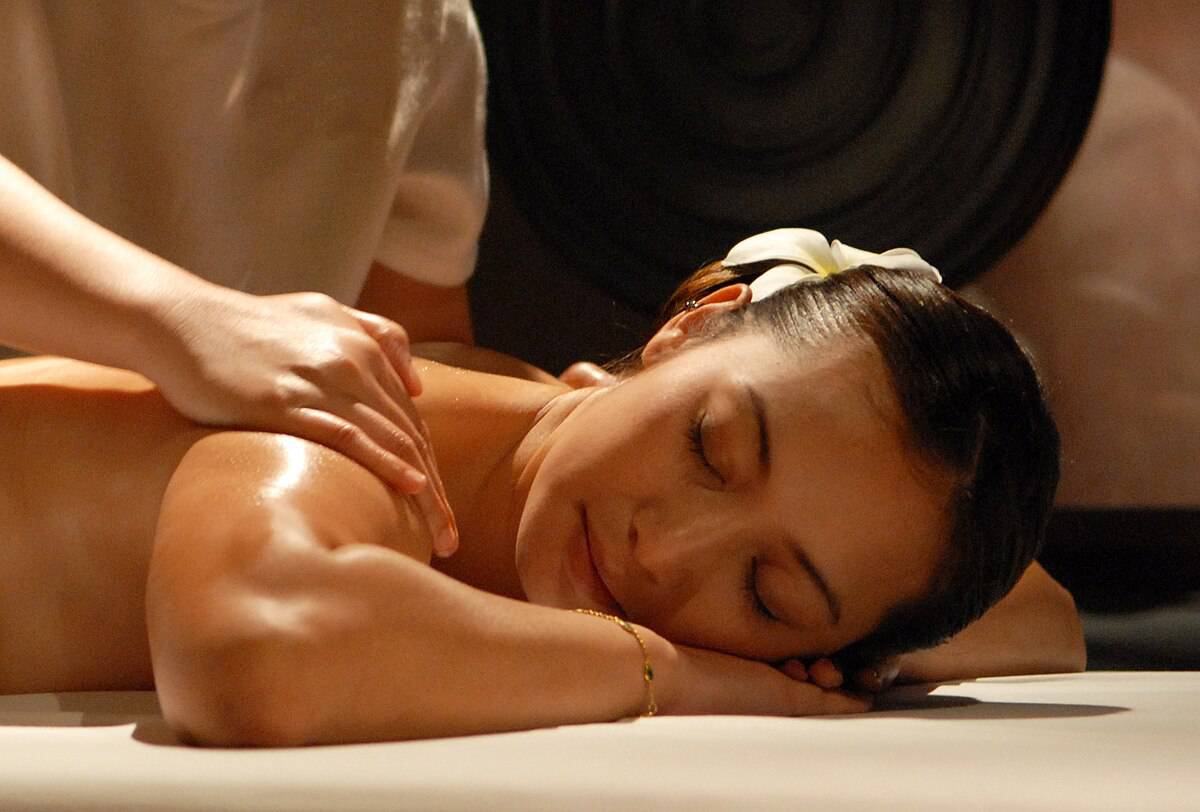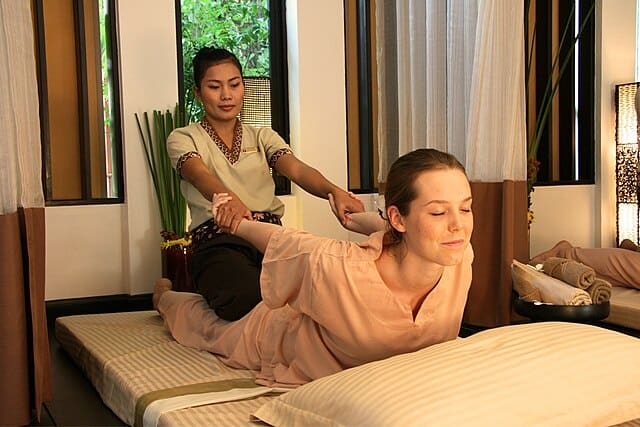Discover the right massage style to relax, heal, energise, or enhance your physical performance

Modern life, dominated by desk jobs and sedentary routines, often leaves us with stiff muscles, poor posture, and daily stress. Massage therapy offers a powerful solution, but with so many massage styles and techniques: Swedish, deep tissue, Thai, shiatsu, sports, hot stone, trigger point, and many more, how do you know which one is right for you? Understanding these disciplines and their benefits can help you make an informed choice and maximise your massage experience.
Swedish Massage
Swedish massage is the most widely practised massage style in the Western world, and for good reason. It’s gentle, rhythmic, and immensely effective at promoting relaxation. This style serves as the perfect introduction to massage for newcomers and is a go-to for those who want to unwind without the intensity of deep pressure.
Per Henrik Ling is widely credited as the pioneer of Swedish massage, having developed the “Swedish Movement System” in the early 1800s, which combined anatomy, physiology, and gymnastics. This was later developed further and standardised by Johan Georg Mezger.
The core techniques of Swedish massage style include effleurage, which are soft, gliding strokes designed to warm up the muscles and increase blood flow; Petrissage, a technique that uses kneading and squeezing to stretch and loosen the muscle fibres; Tapotement, a form of rhythmic tapping that stimulates circulation and releases surface-level tension. Then comes friction, involving deeper circular or linear strokes to break down adhesions and stubborn knots. Finally, vibration or shaking movements help to stimulate the nerves and bring a deep sense of calm.
The benefits of Swedish massage style are well-documented; it reduces stress, improves circulation, enhances flexibility, and relieves general muscle tension. Its soothing nature makes it suitable for people of all ages, including those recovering from minor strains or simply seeking mental clarity.
During a session, you’ll lie on a comfortable massage table, modestly covered with a towel or sheet. Massage oil or lotion is used to facilitate smooth strokes, and the therapist adjusts pressure based on your preference. Sessions typically last 60 to 90 minutes in a calm, low-lit room with relaxing music to enhance the overall experience.
While Swedish massage style is safe for most people, those with recent injuries, fractures, severe osteoporosis, or medical conditions like deep vein thrombosis should consult a doctor beforehand. It is normal to feel a bit sore after the massage, though it should resolve itself within a day. Always communicate openly with your therapist about pressure levels and any discomfort during your session.
Swedish massage is widely available in spas, wellness centres, luxury hotels, and Ayurvedic retreats can be done occasionally, or monthly, for relaxation, while chronic pain and tension might need more frequent sessions of up to 2-3 times a month.
A typical Swedish massage in India can cost anywhere between ₹1,800–₹3,500 per 60-minute session. Abroad in places like the US and UK, one can expect it to cost around $70–$120 and £60–£100, respectively.
Deep Tissue Massage
This massage works by targeting the deeper layers of muscle and connective tissue. It’s especially effective for those dealing with chronic pain, muscle injuries, or postural imbalances. Unlike the light pressure of Swedish massage, this style uses firm, slow strokes and sustained pressure to release deeply rooted knots and adhesions.
This discipline evolved from Swedish and clinical massage traditions, rather than being invented by one person. Its development is rooted in Western anatomy and physiotherapy, focusing on deeper muscle and fascia layers, especially for chronic pain and injury rehabilitation.
This technique is ideal for athletes, manual labourers, or anyone who has repetitive strain issues or old injuries are key benefits. By improving circulation and breaking down scar tissue, this massage not only reduces inflammation but also restores movement and flexibility.
A typical session begins with a discussion about your problem areas and goals. The therapist starts with lighter strokes to warm up your muscles before transitioning into deeper work, often using elbows, thumbs, and forearms. You may experience mild discomfort, particularly on tense or injured spots, but it should never be unbearable. Clear communication is key.
The after-effects of this massage may include temporary soreness or fatigue, but these generally subside within 24–48 hours. Drinking water afterwards helps to flush out toxins released from the muscles. As always, those with serious health issues or recent surgeries should consult a healthcare provider before booking.
Chronic pain and postural issues might call for weekly or biweekly massages, while maintenance therapy can be done once a month. this massage, just like the former, is available in reputed clinics, high-end spas and sports and rehab centres in all major cities across India and abroad. A typical session in India can cost anywhere from ₹2,500–₹4,500 per session, and internationally, in the US and UK, one can expect it to cost around $90–$150 or £80–£130, respectively.
Thai Massage
Thai massage is one of the most physically engaging styles on this list, often referred to as “lazy yoga” because of its dynamic combination of assisted stretching, rhythmic compression, and acupressure. Unlike most Western-style massages, it is performed on a padded mat on the floor, with the client fully clothed in comfortable attire.
Traditionally, Jivaka Kumar Baccha is honoured as the founder of Thai massage, with origins tracing back to the 5th century BCE in India. The practice was transmitted to Thailand, where it evolved, incorporating Ayurvedic, Yogic, and Traditional Chinese Medicine principles.
Rooted in ancient Thai and Ayurvedic traditions, Thai massage follows the body’s energy lines (known as Sen lines), using the practitioner’s palms, thumbs, elbows, knees, and feet to apply pressure. It also involves guided stretches that mobilise the spine, hips, and shoulders in a way that improves the range of motion and posture. There are two primary styles: Northern Thai massage, which is slower and deeper, and Southern Thai massage, which is more rhythmic and flow-based. Both aim to release muscular tension and promote the free flow of energy throughout the body.

Joint mobilisation is another technique used in massage therapy and physical rehabilitation to restore freedom of movement to stiff or achy joints. This approach relies on slow, controlled, and rhythmic movements, often performed in smooth, oscillating or sustained motions by the therapist. These subtle manipulations help stretch the joint capsule and surrounding tissues, gradually easing tension and unlocking a greater range of motion. Joint mobilisation can help relieve stiffness, reduce pain, and bring your joints back to their natural rhythm. It’s especially effective for improving flexibility, correcting movement patterns, and supporting better posture. Over time, consistent joint mobilisation not only improves joint health but also boosts athletic performance and contributes to a greater sense of physical ease and overall well-being.
A session typically lasts 60 to 120 minutes. You’ll be guided through a series of yoga-like stretches while pressure is applied to key areas. The experience is both invigorating and relaxing, leaving you refreshed and more flexible.
While Monthly sessions could be more than enough for most people seeking this for flexibility and mobility needs might need more frequent sessions.
Thai massage is generally safe, but those with recent injuries, cardiovascular issues, or severe osteoporosis should approach with caution. Always inform your therapist about any health conditions or physical limitations beforehand.
Thai Massage is available in Thai wellness centres, speciality spas, and resorts with Southeast Asian treatments. It is also available in Goa, Kerala, and metropolitan spas internationally. A typical session might cost you about ₹2000- ₹4000. Abroad in places like the US and UK, one can expect it to cost around $80–$130 and £70–£120, respectively.
Sports Massage
Sports massage is specifically tailored for athletes and physically active individuals. It targets muscles used repeatedly during exercise or physical labour and can be adapted for different purposes—pre-event stimulation, post-event recovery, ongoing maintenance, or injury rehabilitation. Unlike the other massages discussed above, sports massage is goal-driven; sports massage is designed with performance in mind.
While massage for athletes dates back to ancient times, Jack Meagher is widely recognised for formalising sports massage as a modern discipline in the 20th century, integrating anatomy and performance science. This attribution is accurate and supported by sports massage history.
It draws on techniques from both Swedish and deep tissue styles but applies them strategically to target the muscles you use most, whether you’re running marathons, lifting weights, or juggling long hours on your feet. Depending on where you are in your training cycle, a sports massage can be energising before an event, restorative afterwards, or fine-tuned for long-term maintenance and injury prevention.
The therapist employs a variety of techniques, including effleurage, petrissage, friction, and tapotement, depending on the needs of the athlete. The goal may be to warm up muscles, flush out toxins, reduce soreness, or restore muscle balance. You may also experience techniques like stretching, wringing, hacking, or cupping; all tailored to enhance mobility, circulation, and muscle efficiency. It’s this versatility and functional focus that make sports massage a top pick not only for elite athletes but for anyone with an active routine or movement-based profession.
Your session typically starts with a discussion of your sport, training schedule, and specific complaints. The therapist may assess your flexibility or movement patterns before tailoring the massage to key areas such as the legs, shoulders, or lower back. While athletes can take sessions before and after events, a general individual or someone with an active lifestyle can benefit from monthly sessions or even bimonthly.
While highly beneficial, sports massage can be intense, especially when dealing with tight or overworked muscles. Some soreness is expected afterwards, but hydration and rest can ease recovery. Those with acute injuries or medical conditions should consult a doctor before beginning treatment. Sports massage is also a great choice for non-athletes who perform repetitive tasks, such as desk workers, dancers, or fitness enthusiasts, offering relief and long-term preventative care.
Sports massage is available in Sports rehab clinics, performance centres, physiotherapy units, and some hotel spas in major cities. A typical session might cost you about ₹2,500–₹5,000. Abroad, in places like the US and UK, one can expect it to cost around $100–$160 and £90–£140, respectively.
Hot Stone Massage
Hot stone massage is an indulgent, sensory-rich experience that uses warm, smooth stones (typically basalt) as an extension of the therapist’s hands. These heated stones are placed along key points of the body, often the spine, palms, or toes, and are also used during the massage to knead and glide across muscles.
The use of heated stones for healing has ancient roots in Native American, Hawaiian, and Chinese traditions. The modern revival and popularisation as a formal massage technique is credited to Mary Nelson in the 1990s, who developed and trademarked “LaStone Therapy.” The heat penetrates deeply, loosening muscles and allowing for a gentler touch with equally effective results. It boosts circulation, soothes the nervous system, and relieves tension in a profoundly relaxing way. This therapy relies on the synergy of warmth and movement, using heat to facilitate muscle therapy with minimal pressure.
A typical session lasts between 60 and 90 minutes. Your therapist will check that the stones are at a comfortable temperature, and sessions are usually conducted in a tranquil setting with ambient lighting and calming sounds. Monthly sessions will suit people who are looking for stress relief and relaxation, and people who live in colder climates and suffer from muscle stiffness might benefit from more frequent sessions.
Hot stone massage is generally safe, but people with diabetes, neuropathy, cardiovascular issues, or skin conditions should get medical clearance. It’s also essential to communicate immediately if the stones feel too hot to avoid burns.
Hot stone massage is available in luxury spas, resort retreats, Ayurvedic and wellness resorts in Kerala, Himachal, and most premium spa chains globally. An average session could cost you around ₹3,000–₹5,500 in India, and abroad, in countries like the US and UK, it can cost up to $100–$180 and £90–£150 respectively.
Trigger Point Massage
Trigger point massage takes a highly focused approach, targeting specific knots and the tension in the muscles that might even lead to pain in other parts of the body, often causing headaches, Jaw pain and other symptoms. When trigger points cause pain to develop in other parts of the body, it is called referred pain.
Dr Janet Travell and Dr David Simons are the pioneers who formalised trigger point therapy, mapping out trigger points and referred pain patterns in the mid-20th century. Their work is foundational in Western clinical medicine and myofascial research.
The therapist uses sustained, firm pressure on these points for 30 to 90 seconds, often eliciting a momentary “referred pain” response, followed by noticeable release. After working the area, lighter strokes are used to flush out toxins and promote blood flow.
This technique is especially valuable for people with chronic pain, postural imbalances, or repetitive strain injuries. By isolating and releasing these knots, trigger point therapy improves mobility and reduces pain episodes.
Sessions focus on specific areas rather than the entire body and typically last 30 to 60 minutes. They may be uncomfortable, but they should not cause lasting pain. Communication throughout the session is crucial to ensure you’re within your comfort threshold.
As with deep tissue style, those on blood thinners, recovering from surgery, or with fragile bones should consult a healthcare provider before booking. Some soreness is expected, but water, rest, and light activity can help with recovery.
Trigger point massage sessions are available in physiotherapy clinics, medical wellness centres, and with certified massage therapists. It is also often available in sports medicine or chiropractic facilities. A typical session in India can cost up to ₹2,000–₹4,000. Abroad, in countries like the US and UK, it can cost up to $85–$140 and £75–£120, respectively.
Ayurvedic Massage
Ayurvedic massage offers far more than physical relaxation. Its techniques are described in foundational Vedic texts such as the Charaka Samhita and Sushruta Samhita and have been passed down through generations. It’s a deeply personalised and holistic therapy that works on the principle of balancing the body, mind, and spirit by aligning the three vital energies or doshas: Vata, Pitta, and Kapha. When these energies are in harmony, health flourishes. When they fall out of balance, discomfort or disease begins to surface. Ayurvedic massage doesn’t simply target physical aches—it treats the whole person, weaving together touch, energy, herbs, and intention in a way that supports profound inner balance.
One of the hallmarks of Ayurvedic massage is the generous use of warm, herb-infused oils, chosen specifically for your dosha. There are several forms of Ayurvedic massage. Abhyanga, the classic full-body oil massage, is the most well-known and serves as a foundational treatment for doshic balance and daily wellness.
The experience is calming, nourishing, and grounding. Shirodhara, on the other hand, involves the continuous pouring of warm oil over the forehead’s third-eye centre. It is calming and meant to help quiet an overactive mind and ease stress, insomnia, and anxiety.
Udvartana is a dry herbal massage that uses medicinal powders instead of oils to exfoliate, stimulate lymphatic flow, and boost metabolism, especially beneficial for Kapha-related stagnation and weight management.
Then there’s Pinda Sweda, where warm herbal poultices are massaged into the body to relieve deep-seated muscular pain, reduce inflammation, and ease joint stiffness.
Each of these treatments is a different doorway into the vast healing system of Ayurveda, offering not only physical benefits but deep energetic renewal.
A typical session begins with a short consultation, during which the therapist identifies your dosha and tailors the treatment accordingly. Once on the massage table, usually covered modestly and warmly, you’ll first experience a gentle application of warm oil to the body. From there, the therapist may use sweeping strokes, kneading, rhythmic patterns, or targeted marma pressure, depending on what your system requires. The room is often filled with soft, meditative music, and a warm, comforting atmosphere prevails throughout. A session usually lasts between 60 and 90 minutes, and afterwards, you’re encouraged to rest, reflect, and allow the oils and energies to settle into your body’s deeper layers.
While panchakarma and seasonal detox are accompanied by daily massages, it does not change the fact that the exact frequency may vary based on individual constitution (Prakruti), current imbalances (Vikruti), health goals, and practitioner guidance. Some Ayurvedic centres also tailor frequency according to seasonal changes and personal needs
As deeply rejuvenating as Ayurvedic massage can be, it’s essential to keep certain precautions in mind. Those recovering from recent surgery, battling infections, or living with severe circulatory disorders should consult a healthcare provider before undergoing treatment. Some individuals may also be sensitive to particular herbal oils, so always inform your therapist of any allergies or skin sensitivities ahead of time. Additionally, if you’re not accustomed to deeper tissue work or energetic therapies, some techniques like marma point stimulation may feel intense. This makes open communication with your therapist key to ensuring comfort and safety throughout your session.
Authentic Ayurvedic centres and wellness retreats in Kerala, Goa, and Rishikesh provide Ayurvedic massages. Occasionally, it can also be found in other massage centres in India.
A typical session will cost you from 1500-5000, depending on the type of massage. Basic Abhagya can cost around $70–$120 / £60–£110 abroad. Panchakarma packages usually start from 25,000 and can cost up to 70,000, depending on the centre.
Getting The Most Out of Your Massage
Regardless of the style you choose, your experience can be greatly enhanced with a few simple practices. Always begin with clear communication: let your therapist know about your pain points, pressure preferences, and any medical conditions. This allows them to tailor the session specifically to your body’s needs.
Hydration before and after the session is key; it helps flush out toxins released during the massage and aids recovery. The water will keep your muscles pliable and make up for any fluid lost during the massage. It also helps you recover faster from any soreness after the massage. After your session, give yourself some time to rest. Don’t jump straight into strenuous activity. Instead, allow your body to absorb the full benefits of the treatment.
For long-term benefits, consistency matters. Regular massage sessions can improve your posture, reduce pain frequency, and support overall well-being. Over time, you’ll likely notice enhanced flexibility, better sleep, and a calmer state of mind.
Each massage technique offers something unique: By understanding what sets each apart, you empower yourself to make informed choices that support your lifestyle, health goals, and preferences. Whether you’re looking to heal, relax, energise, or enhance performance, massage therapy can be a transformative addition to your wellness routine.
Read More: Latest



